If you’re looking for a durable, high-gloss finish for your acrylic paintings, you may be wondering if it’s possible to lacquer over them. The answer is yes – but there are some things you need to know before you get started. In this article, we’ll discuss the pros and cons of lacquering acrylic paintings, and we’ll give you some tips on how to do it correctly.
What Is Lacquer?
Lacquer is a clear or colored coating that dries to a hard, glossy finish. It can be made from natural resins or synthetic polymers, and it’s often used as a protective coating on wood, metal, and other surfaces. When applied correctly, lacquer is an extremely durable finish that can resist scratches, stains, and even UV light. [1]
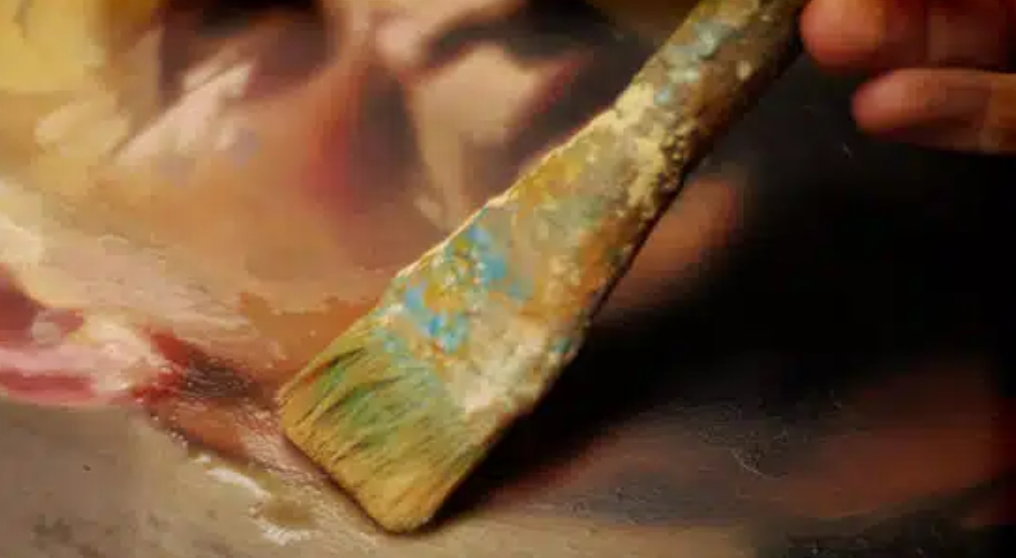
What Is Acrylic Paint?
Acrylic paint is a type of synthetic resin-based paint that dries to a hard, glossy finish. It’s made from a mixture of pigments, binders, and solvents, and it’s often used by artists because of its versatility and durability. Acrylic paint can be thinned with water or thickened with acrylic mediums, and it can be applied to a variety of surfaces.
Can You Lacquer Over Acrylic Paint?
Yes, you can lacquer over acrylic paint – but there are a few things you need to keep in mind. First, it’s important to use a lacquer that is compatible with acrylic paint. Some lacquers will react with the paint, causing it to yellow or crack. Second, you need to make sure the surface is completely dry before applying the lacquer. If the paint is still wet, the lacquer will not adhere properly and may cause the paint to peel or flake off. Finally, always test the lacquer on a small area of the painting first to make sure it gives you the desired effect. [2]
Lacquering Solvent-based Acrylic
Lacquering over acrylic paint is possible, but you need to be aware of a few things before you start. First, the lacquer must be compatible with the paint. This means that it must be able to adhere to the paint without causing any damage or reaction. Second, you need to make sure that the surface is properly prepared before applying the lacquer. This means that it should be clean, dry, and free of any dirt, grease, or other contaminants. Finally, you need to apply the lacquer in thin coats so that it doesn’t cause any problems with the paint beneath it.
Lacquering Acrylic Latex Paint
Acrylic latex paint is a durable, long-lasting type of paint that is commonly used for both interior and exterior surfaces. While it is possible to lacquer over acrylic latex paint, there are a few things you need to do in order to prepare the surface properly.
First, you need to make sure that the acrylic latex paint is completely dry and free of any dirt or debris. If your paint is not completely dry, the lacquer will not adhere properly and may even cause the paint to peel or chip off.
Once you have verified that the paint is dry, you need to sand the surface lightly with fine-grit sandpaper in order to create a smooth surface for the lacquer to adhere to. After sanding, you should wipe down the surface with a clean, damp cloth to remove any dust or debris.
Now you are ready to apply the lacquer. For best results, you should use a high-quality lacquer designed specifically for use over acrylic latex paint. You can apply the lacquer with a brush, roller, or sprayer.
Once the first coat of lacquer has dried, you can apply additional coats if desired. Just be sure to sand lightly and clean the surface between each coat.
Lacquer Properties
Lacquer is a clear or colored varnish that dries by evaporation of the solvent to form a hard, durable finish. It is made from synthetic resins, oils, and solvents, and it can be applied to a variety of surfaces.
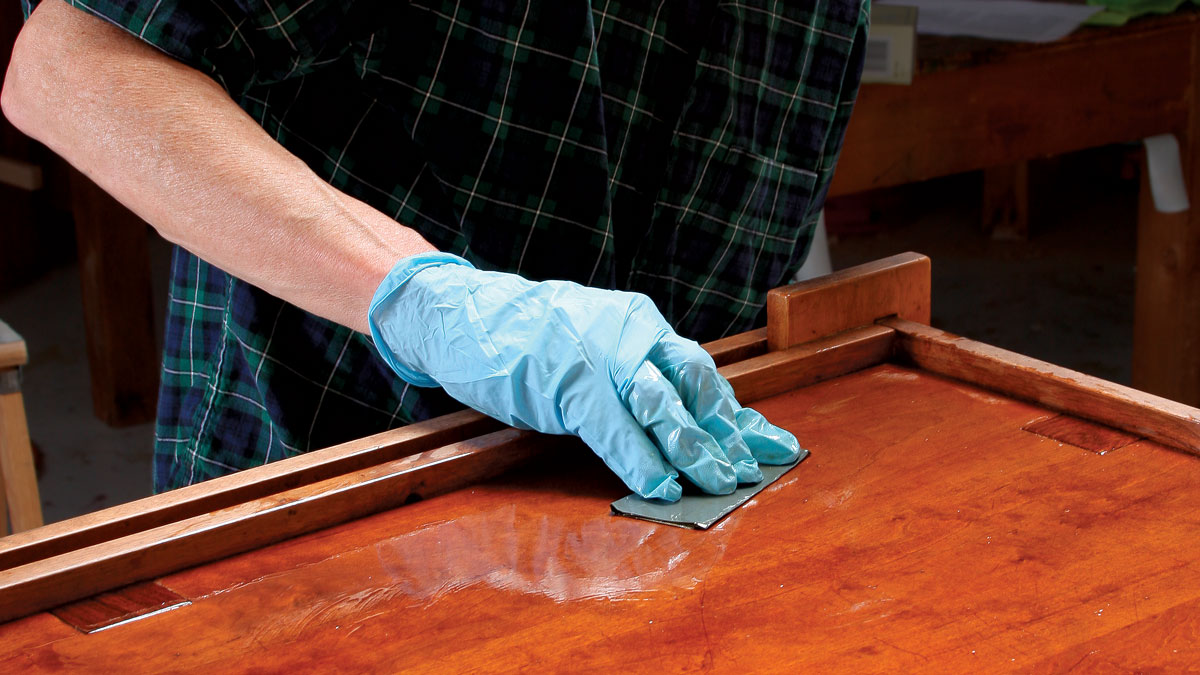
Lacquer is available in both water-based and solvent-based formulations. Water-based lacquer dries more quickly than solvent-based lacquer, but it is not as durable. Solvent-based lacquer takes longer to dry but is more resistant to scratches, stains, and UV light.
Lacquer can be applied with a brush, roller, or sprayer. For best results, multiple thin coats should be applied rather than one thick coat.
Lacquer is typically used on wood, metal, and plastic surfaces. It can also be used over paint, but it is important to use a compatible lacquer so that it does not react with the underlying paint. [3]
The Process Of Lacquering
Lacquering is the process of applying a protective coating to wood or metal. The three main types of lacquer are shellac, varnish, and polyurethane. Shellac is made from the resin of the lac bug, which is native to India and Thailand. Varnish is made from resins, oils, and solvents. Polyurethane is a synthetic polymer that can be either oil- or water-based.
Applying lacquer is a multi-step process that requires sanding between each coat to create a smooth surface. First, the surface must be cleaned with a degreaser to remove any dirt, dust, or grease. Next, the surface is sanded with increasingly fine grit sandpaper to create a smooth surface. Once the surface is smooth, a primer is applied to help the lacquer adhere to the surface. Finally, multiple coats of lacquer are applied, with each coat being allowed to dry completely before the next coat is applied.
Lacquer is available in both spray and brush-on formulas. Spray lacquer is easier to apply evenly, but brush-on lacquer will give you more control over the final finish.
Other Ways To Achieve A Good Finish Of Acrylics
As we have seen, there are some cases in which you can use lacquer over acrylic paint. But what about other ways to get a good finish with your acrylics?
One way is to use an isolation coat before painting. This will protect the underlying surface from the paint and allow you to achieve a much smoother finish.
Another way to get a smooth finish is to sand the surface before painting. This will create a smooth surface for the paint to adhere to and will also help to fill in any imperfections.
Finally, you can also use a varnish or sealer over your painted surface. This will protect the paint from wear and tear and will also give it a nice sheen.
Varnishing
Varnishing your painting is one of the final steps in the acrylic painting process. It protects your work from dirt, dust, and UV rays, and can even give it a bit of extra shine. But what kind of varnish should you use?
There are two main types of varnish: lacquer and acrylic. Lacquer is a clear, hard-drying coating made from polymerized nitrocellulose dissolved in solvents. It’s durable and scratch-resistant, making it a good choice for outdoor paintings or those that will be handled frequently. Acrylic varnish is made from an emulsion of polymers in water. It dries to a soft, flexible film that’s less susceptible to scratches and yellowing.
Both lacquer and acrylic varnish can be applied by brush, roller, or spray. But before you start, it’s important to prepare the painting surface. First, make sure the paint is completely dry. Then, gently wipe away any dust or debris with a soft, clean cloth.
Once the surface is prepped, you’re ready to apply the varnish of your choice. For lacquer, start by shaking the can well to mix the contents. Then, holding the can 8-12 inches from the surface, apply a thin, even coat with overlapping strokes. Let the first coat dry for at least 2 hours before applying a second. For acrylic varnish, mix the contents of the bottle with a stir stick. Then, following the same process as lacquer, apply a thin, even coat to the surface.
With either type of varnish, it’s important to work in a well-ventilated area and to wear a respirator to avoid inhaling fumes.
Once you’ve applied the varnish, allow it to dry completely before moving or framing the painting. Depending on the brand and type of varnish, this can take anywhere from 24 hours to a week. [4]
The Process Of Varnishing
Acrylic paint is a versatile medium that can be used for a variety of painting projects. It dries quickly, making it ideal for works that need to be completed in a short period of time. Additionally, acrylics can be diluted with water, making them perfect for washes and glazes. However, one downside to acrylics is that they are not as durable as oil paints. This means that they are more susceptible to damage from UV light and moisture.
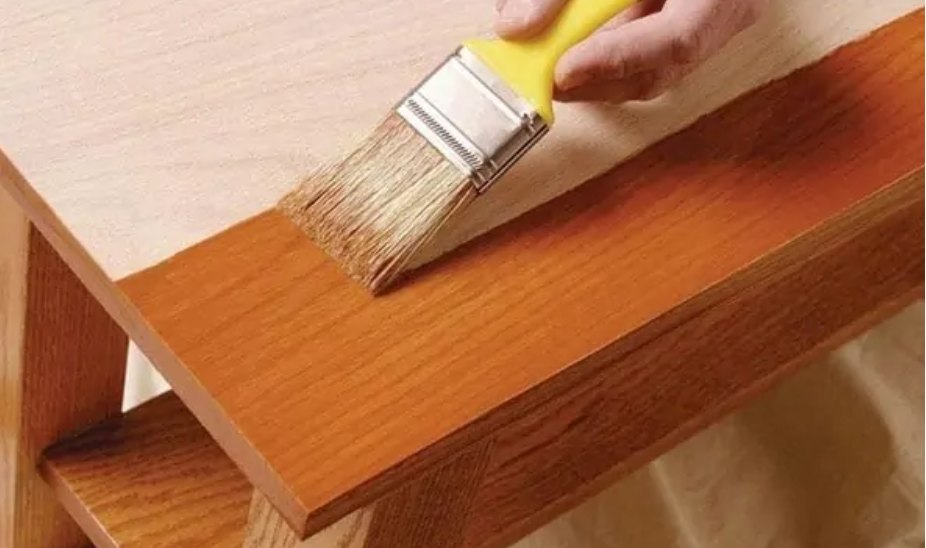
To protect your acrylic painting from these elements, you will need to varnish it. Varnishing an acrylic painting is a simple process that will help to extend the life of your artwork.
Step 1: Use A Separate Glass Jar Or Plastic Cup For Your Varnish
When you are ready to varnish your painting, start by pouring some varnish into a separate glass jar or plastic cup. Do not pour the varnish directly from the container onto your painting surface. This will contaminate the rest of the varnish and make it impossible to reuse.
Step 2: Mix The Correct Ratio Of Varnish
Once you have poured the varnish into a separate container, it’s time to mix in the medium. The ratio of varnish to medium will vary depending on the brand of varnish that you are using. Refer to the instructions on the bottle for the correct proportions.
Step 3: Place The Painting In A Flat Position While Varnishing
To avoid any drips or runs, it’s important to varnish your painting in a flat position. Place the painting on a level surface before you start applying the varnish. If you are working with a large painting, you may need to use clamps or weights to keep it in place.
Step 4: Check Your Painting From Different Angles
Once you have applied the varnish, it’s important to check your work from different angles. This will help you to identify any areas that you may have missed. Use a strong light source to help you see the varnish more clearly.
FAQ
How long before you can varnish an acrylic painting?
You should wait at least 24 hours after you have finished your painting before you start to varnish. This will give the paint enough time to fully dry. If you try to varnish your painting too soon, the varnish will not adhere properly and could cause damage to the paint surface.
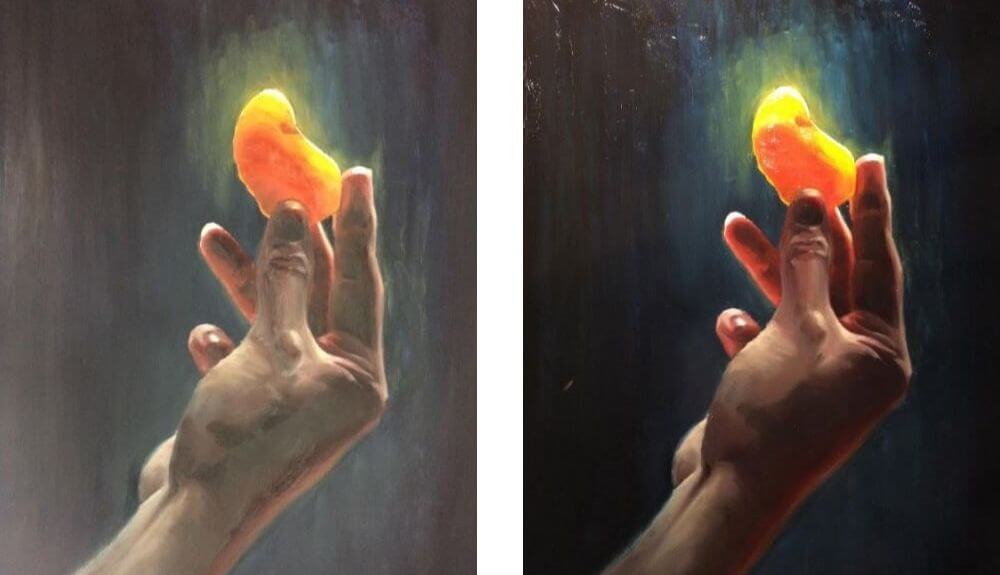
Is acrylic paint waterproof?
No, acrylic paint is not waterproof. However, it is water-resistant. This means that it will resist damage from moisture but will not be completely immune to it. For example, if you spill water on an acrylic painting, the paint will likely suffer some damage.
What is Gloss Mod Podge?
Gloss Mod Podge is a type of sealant that can be used on a variety of surfaces. It is often used to protect paintings, photographs, and other works of art. Gloss Mod Podge will give your painting a shiny, protective finish. [5]
Why is my clear coat not glossy?
There are a few reasons why your clear coat might not be glossy. First, make sure that you are using a product that is designed to give a glossy finish. Second, check to see if the surface of your painting is clean and free of debris. Finally, make sure that you have given the varnish enough time to dry completely. Glossy finishes can take several hours or even days to fully cure.
Should I sand between coats of clearcoat?
Yes, you should sand between coats of clearcoat. This will help to smooth out the surface and provide a better foundation for the next coat. Use a fine-grit sandpaper and sand in the same direction as the grain.
When it comes to choosing a lacquer for your project, there are two main types to choose from: water-based and oil-based. Water-based lacquers dry more quickly than oil-based lacquers, making them ideal for projects that need to be completed in a short period of time. Additionally, water-based lacquers are less likely to yellow over time. However, they are not as durable as oil-based lacquers and may not provide as much protection for your project. Oil-based lacquers take longer to dry, but they are more durable and provide more protection. If you are working on a project that will be exposed to a lot of wear and tear, oil-based lacquer is the better choice. [6]
Once you have decided on the type of lacquer you want to use, you need to prepare the surface before you start applying it. For both water-based and oil-based lacquers, this means sanding the surface until it is smooth. Once you have finished sanding, wipe down the surface with a damp cloth to remove any dust.
Once you have prepared the surface, you are ready to start applying the lacquer. Begin by painting a thin layer over the entire surface. Use even strokes and pay close attention to corners and edges. Allow the first coat of lacquer to dry completely before applying a second coat. Continue adding coats until you have achieved the desired level of protection.
Useful Video: Type of Modeling paints | Acrylics Enamels Lacquers
Conclusion
Can you lacquer over acrylic paint? The short answer is yes! You can lacquer over acrylic paint as long as the paint is dry and has been properly sealed. Applying a layer of lacquer will protect your painting from damage and make it last longer. Thanks for reading and we hope this article was helpful!
References
- https://www.homequestionsanswered.com/what-is-lacquer.html
- https://www.hunker.com/12004051/can-i-lacquer-over-acrylic-paint
- https://www.finewoodworking.com/2005/09/13/all-about-lacquers
- https://www.savoytimber.com/help-and-advice/difference-varnish-lacquer/
- https://modpodgerocksblog.com/all-about-mod-podge-gloss/
- https://www.targetcoatings.com/2020/08/05/water-based-polyurethane-vs-oil-based-polyurethane/


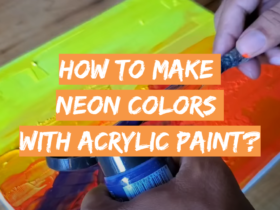
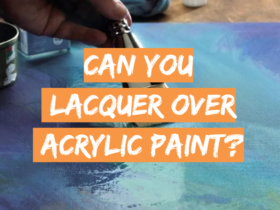

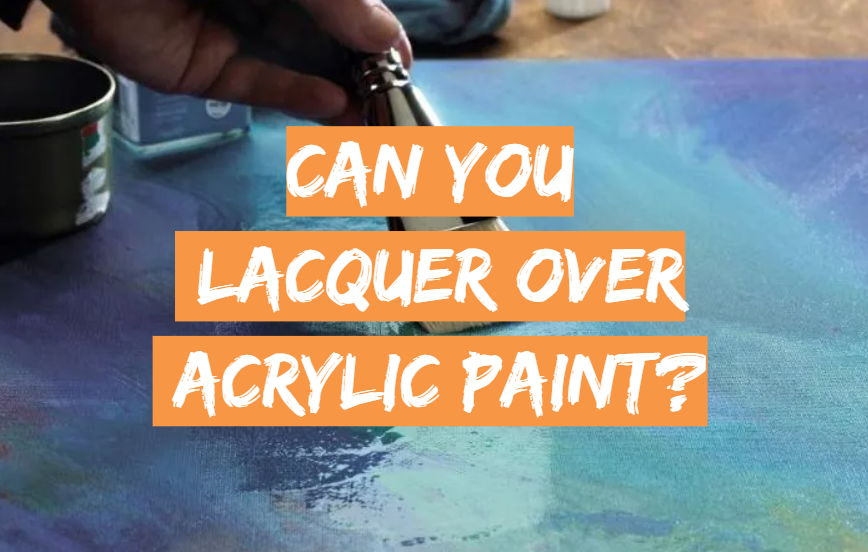




Leave a Review